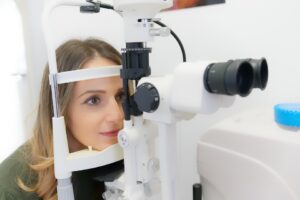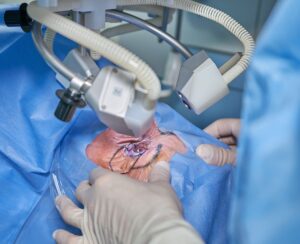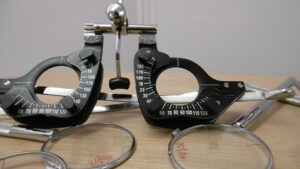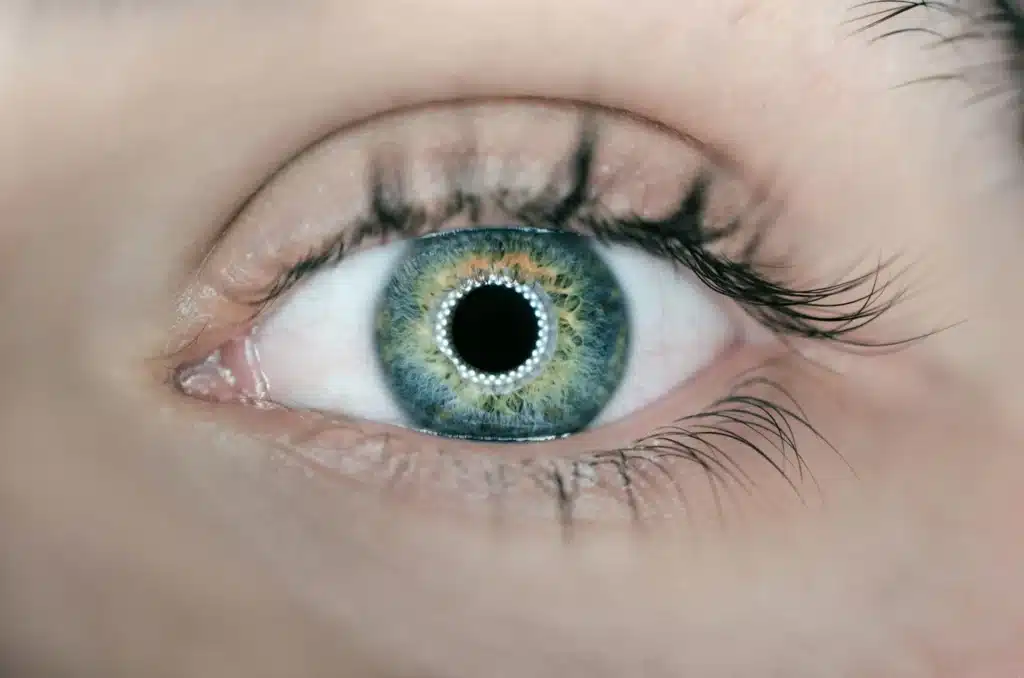As you grow older, your chances of experiencing vision problems increases. It’s one of the many signs of aging and is something every individual must prepare for the older they get, especially since early detection and early diagnosis is often the best way to treat eye disease.
That’s what makes regular visits to your eye doctor or ophthalmologist so important to eye health. They not only have the knowledge and experience when diagnosing or treating an eye condition, but they have the necessary tools and equipment to do so in a timely manner.
One of the most common eye conditions in today’s society is cataracts, which affect more than 20 million people above the age of 40 in the United States alone. In fact, more than half of all Americans above the age of 80 either have cataracts or have received treatment for cataracts.

So, what are cataracts?
A cataract is a cloudiness in the natural lens that develops over time. This lens is normally clear and is known for producing nearly one-third of the optic power. It’s responsible for focusing light into the back of the eye (retina), which is then processed by the brain by way of the optic nerve.
With a cataract, the cloudy lens results in cloudy or blurred vision. It’s the equivalent of looking through a fogged-up window or piece of glass. As you can likely imagine, this makes it difficult to see, especially when reading or driving. Treatments exist and are generally safe and effective.
Most people won’t know they have a cataract in its early stages unless detected by your eye doctor during an eye exam. They normally develop slowly over time and won’t produce a lot of symptoms early on. With that said, it will eventually start to impact your vision and eyesight.
It’s important to note that, just because you have a cataract in one eye, doesn’t mean you’ll have cataracts in both eyes. In the event you do have it in both eyes, your eye surgeon won’t treat them at the same time. Instead, they’ll wait for the first surgery to heal before moving forward with the second one.

Diagnosing a Cataract
Like we mentioned above, an ophthalmologist can detect signs of a cataract during a comprehensive eye exam. Unfortunately, most people are reluctant to schedule a regular exam with their eye doctor. As a result, a lot of the early signs of a cataract go unnoticed early on.
Eventually, vision impairment will settle in, which is normally a catalyst for scheduling an appointment with the eye doctor. Symptoms of a cataract include clouded or blurred vision, difficulty seeing at night, sensitivity to light, seeing halos, fading colors, or double vision.
During a comprehensive eye exam, your eye doctor will perform a variety of tests in hopes of detecting a cataract, including a review of your medical and family history. Some of the most prominent tests include a visual acuity test, a slit-lamp examination, and a retinal exam.
There are several different types of cataracts. For example, nuclear cataracts are those that affect the center of the lens, cortical cataracts affect the edges of the lens, posterior subcapsular cataracts affect the back of the lens, and congenital cataracts are cataracts you’re born with.

Different Types of Cataract Surgery
Cataract surgery remains the safest and most effective form of treatment for cataracts that have started to impact the patient’s quality of life. It’s administered on an outpatient basis, which means you won’t be spending the night in a hospital and will be allowed to return home after it.
Cataract surgery involves using a local anesthetic to numb the area surrounding the eye. The eye surgeon makes an incision in the eye to remove the natural lens and replace it with an artificial lens — known as the intraocular lens. This lens becomes a permanent part of the eye.
There are several different types of cataract surgery and the eye surgeon will determine which one is best suited for each patient. Let’s take a quick look at the different types:
Phacoemulsification
The most common type of cataract surgery involves using an ultrasonic device to create vibrating waves that soften and break up the natural lens, which is then suctioned out of the eye and replaced by an intraocular lens.
Femtosecond Laser-Assisted Cataract Surgery
Femtosecond laser-assisted cataract surgery (FLACS) is a more recent development in the history of cataract surgery. The doctor uses a femtosecond laser to make cleavage planes via photodisruption in transparent tissues with this surgery. The photodisruption uses the aid of real-time intraoperative imaging to correct astigmatism and perform some steps of the surgery with the precision and reliability of a laser.
Toric Intraocular Lenses
You may have heard of toric in terms of contact lenses for those with astigmatism. A toric intraocular lens has a similar effect, only it’s permanently implanted in the eye.
The toric intraocular lens has markers directly on it so the orientation will be correct during surgery. The surgeon will secure the lens so it doesn’t rotate post-procedure. Toric lenses have a history — backed by research — of improving vision for those with cataracts and astigmatism.
If someone has a natural lens in the eye, it is called phakic. If someone has an artificial lens, it is called a pseudophakic or false lens. The new lens offers the same light-focusing function as the natural crystalline lens.
Multifocal Intraocular Lenses
Restoring accommodation following cataract surgery or through refractive lens exchange is becoming an increasingly important topic in ophthalmology.
Monofocal intraocular lenses only have one focal point and correct distance vision. Multifocal intraocular lenses are artificial intraocular lenses made to offer focus for distant and near objects. The goal of multifocal intraocular lens implants is to reduce your need for glasses after cataract surgery. Often, patients do not need to wear any glasses at all!

Lifestyle Remedies When Treating Cataracts
Not all cataracts require surgery. Some cataracts can be treated with glasses or contact lenses, especially when detected and diagnosed in their early stages. Surgery is only recommended when the cataract starts to greatly impact vision and impede your ability to live a quality life.
With that said, there are a variety of ways to treat cataracts without surgery, as well as ways to prevent the symptoms or development of cataracts. Let’s take a look at some of the most prominent ways:
- Keep your eyeglass or contact lens prescription up-to-date
- Utilize magnifying glasses if you have difficulty reading
- Increase the brightness in your home with brighter lights
- Wear sunglasses and a hat when exposing yourself to sunlight
- Limit driving at night as much as possible
- Eat a healthy diet that consists of fruits and vegetables
- Avoid alcohol and tobacco use as much as possible
- Always follow the advice and direction of your primary and eye doctors
There’s nothing more important than eye health. Whether you’re interested in going over procedure options or simply want to reassure yourself that your eyes are in good condition, schedule a comprehensive eye exam with an eye care specialist today. As always, you can trust the good people over at Milwaukee Eye Surgeons , so don’t hesitate to contact us today!


